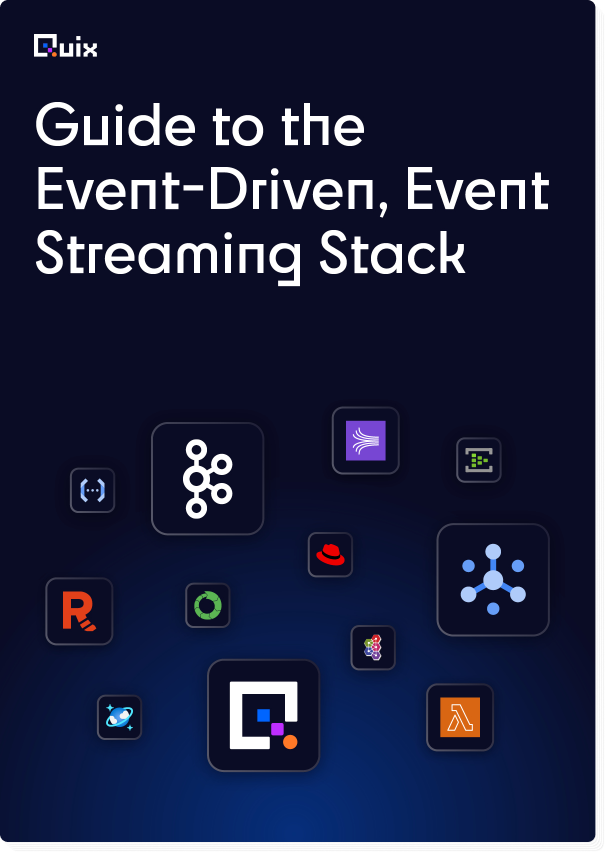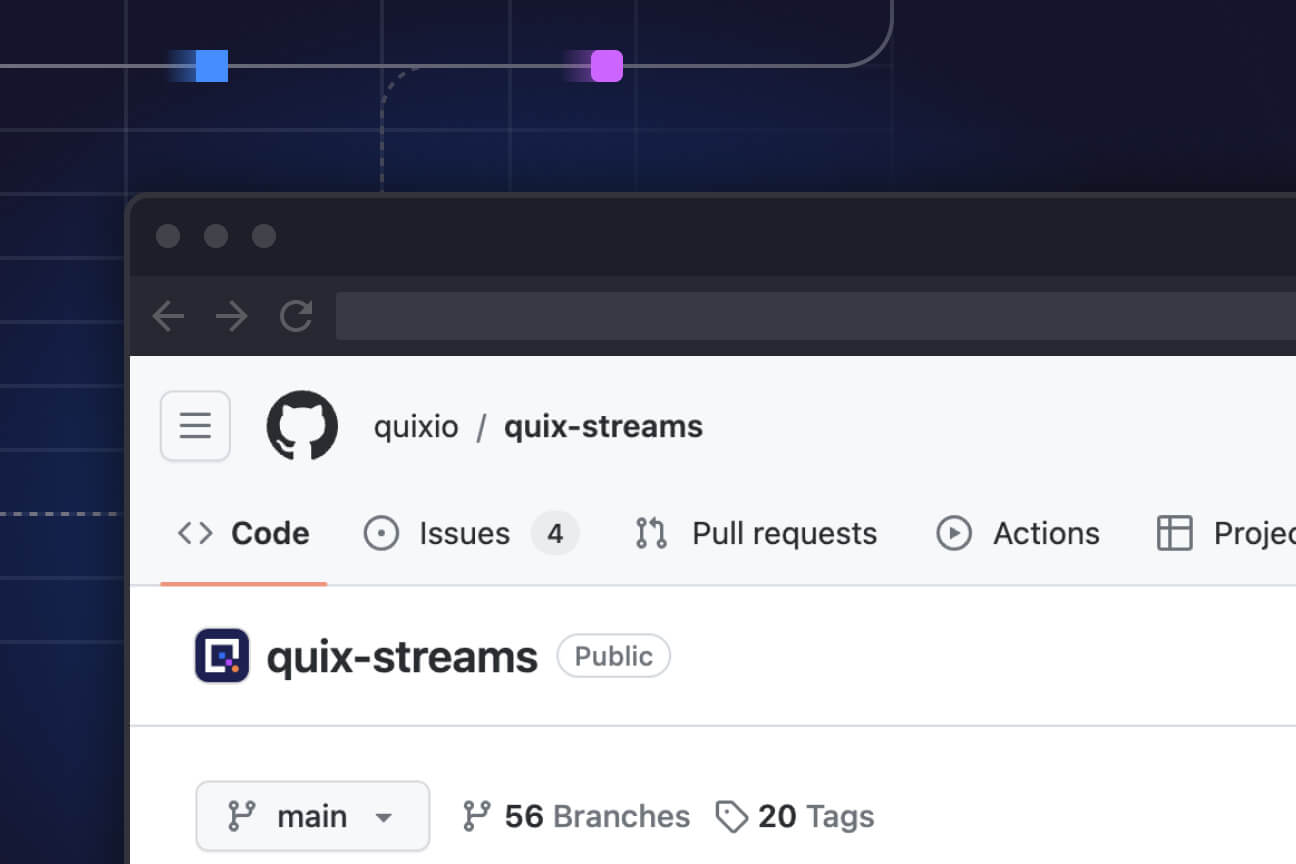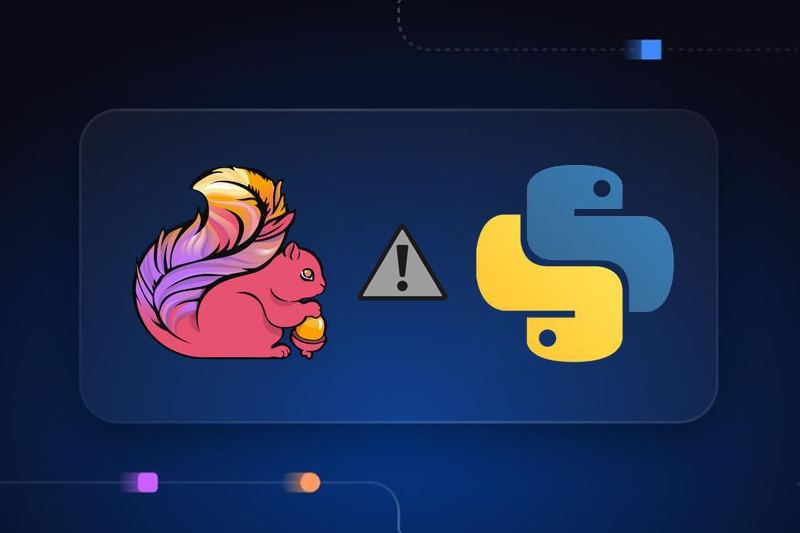Kinesis vs Kafka - A comparison of streaming data platforms
A comparison of Apache Kafka & Amazon Kinesis covering operational attributes, pricing and time to production, highlighting their key differences and use cases

Introduction
Apache Kafka and Amazon Kinesis are two of the technologies that can help you manage real-time data streams. And, although they have a great deal in common, there are some significant differences you’ll need to consider when choosing whether to use Kafka or Kinesis.
In this comparison, we’ll look at the most important differences between them and the impact their deployment and DevOps models will have on your team’s resources. We’ll also look at how Kafka and Kinesis engage with complementary tools such as Apache Spark, Quix, and AWS Lambda.
First, though, if you’re here because you’re planning to build an event-driven application, I recommend the “Guide to the Event-Driven, Event Streaming Stack,” which talks about all the components of EDA and walks you through a reference use case and decision tree to help you understand where each component fits in.
Okay, so let’s look at why we’re pitting Kafka vs Kinesis.
- Similar core goals: Both platforms aim to provide high-throughput, low-latency, and fault-tolerant data streaming capabilities. They are designed to handle massive amounts of data in real-time.
Overlapping use cases: Kafka and Kinesis play a very similar role in many scenarios, such as building real-time streaming data pipelines, ingesting logs, and implementing event-driven architectures. - The rise of the cloud-native Kafka ecosystem: Managed Kafka solutions like Confluent Cloud, Amazon MSK, and Aiven for Apache Kafka allow us to compare Kafka and Kinesis on a more level playing field in terms of operational ease. Both managed Kafka services and Amazon Kinesis take care of infrastructure management, scaling, and maintenance, allowing you to focus on building applications.
- The advent of stream processing: Kafka and Kinesis aren’t just about moving data from one place to another. Integrations with tools such as Kafka Streams, Apache Flink, and Quix also enable you to process data in-flight.
So, if you’re trying to decide between Apache Kafka and Amazon Kinesis, you’re in the right place. Here, we’ll guide you through the most important points of comparison while highlighting the key differences between the two event streaming platforms. But first, let’s define what these two systems actually do.
What is Apache Kafka?
Apache Kafka is an open-source distributed streaming platform designed to move high volumes of data at speed around event-driven systems. At its heart, Kafka is an append-only log. What makes it a great fit for a huge variety of use cases is that it can write to that log from almost any data source and, in turn, just about any consumer can read from it.
To make it scalable and resilient, Kafka partitions and replicates the log across multiple servers in a cluster. Combined with a “shared nothing” architecture, that means both that the cluster can survive the failure of individual nodes and that you can scale-out its capacity by adding more nodes. Originally developed at LinkedIn, and now a project of the Apache Software Foundation, Kafka has become a popular choice for building real-time data pipelines, event-driven architectures, and microservices applications.

Core Capabilities:
High-throughput, low-latency data transport: Publish and subscribe to real-time, event-based data streams known in Kafka as topics.
Highly scalable and resilient: Kafka avoids single points of failure by running as a cluster of multiple servers, partitioning and replicating each topic among them. In the event of failure, or if you add new servers, Kafka rebalances the partitions accordingly.
Data persistence: Each record is appended to Kafka’s read-only log and you can tune retention based on age and size.
Key features:
Decoupled event streaming: Kafka ingests events, or messages, from multiple sources in real-time. Consumers then read and respond to those events at their own pace.
Process data in-flight: Perform real-time processing, including stateful operations, whether that’s using your own code with the Kafka Streams library, or using stream processing tools such as Apache Flink and Quix. You can then write the results back into Kafka for further processing and distribution.
Flexible data formats: Kafka is data-format agnostic, meaning you can work with JSON, XML, Apache’s own Avro, Protobufs, or whatever you prefer. However, there are some performance limits to the size of individual messages and you’ll need to consider how to serialize/deserialize less common formats.
Connect to a rich ecosystem: You can hook Kafka up to just about any data source or processing tool thanks to both official and community supported connectors.
Active open source community. As an open source project, Kafka has a global developer community offering informal support and producing client libraries and connectors to work with a broad range of languages, frameworks, and other technologies.
Self-hosted but cloud options are available: As an open source project, Apache Kafka is free to use on your own hardware, while hosted versions are available from cloud providers.
What is Amazon Kinesis?
Amazon Kinesis is a managed, cloud-based service for real-time data streaming and processing provided by Amazon Web Services (AWS). Kinesis collects, processes, and analyzes large volumes of data in real-time, enabling quick decision-making and responsive applications. It is designed to handle massive amounts of data with low-latency and high-throughput.
Just like Kafka, the core of Kinesis is an immutable event log. Producers write to Kinesis, consumers read from it, and you can connect stream processing tools, such as Apache Flink and serverless functions running in AWS Lambda. Perhaps the most important difference between Kinesis and Kafka is that Kinesis is proprietary software available only as a cloud service from AWS.

Core Capabilities:
High-throughput, low-latency data transport: Publish and subscribe to real-time, event-based data streams known in Kinesis as streams
On-demand scaling: Kinesis Data Streams On-Demand mode provides a serverless experience, scaling up and down automatically to meet changes in demand.
Highly resilient: Kinesis distributes your data streaming workloads across multiple AWS availability zones, with data persistence for up to 365 days, enabling automatic recovery from failures.
Key features:
Three types of data streaming: Kinesis offers different options depending on your data needs. Kinesis Data Streams is for real-time ingestion and distribution of data to consumers, with the option of connecting processing tools and your own custom code. Kinesis Data Firehose is specifically for transforming and loading data into AWS data storage products, such as S3 and Redshift. Kinesis Video Streams supports streams, stores, and encrypts video data from sources such as surveillance cameras, with integrations into video-specific processing tools, such as AWS Rekognition.
Tight AWS integration: Ingest data from AWS services, such as AWS EventBridge and AWS Simple Queue Service, and then process data using tools such as AWS Lambda and AMS for Apache Flink. There are also some integrations with non-AWS tools, such as Apache Spark, Apache Flink, and Quix.
Fully managed: There’s no set-up and very little ongoing DevOps burden with Amazon Kinesis. That lets you focus engineering resources on building your own software.
Pay as you go: There are no upfront costs but the trade-off is that you’ll pay usage fees for as long as you need Kinesis.
Easy monitoring and management: AWS Management Console and APIs, as well as integration with AWS tools such as CloudFront, give you rich control and visibility of your Kinesis streams.
Summarizing Kafka vs Kinesis
Kafka and Kinesis do pretty much the same core job. They both ingest data in real-time from multiple sources and write it to a highly available log. Consumers and processing tools can then consume data from that log and, optionally, write back into the data stream.
Both offerings will also scale with your needs but that’s where we hit the main difference between Kafka and Kinesis. As an open source technology, you need to set up and manage Kafka yourself. With its reputation for operational complexity, Kafka can increase the time it takes to deliver your project. Kinesis, on the other hand, requires very little DevOps input, whether that’s for day-to-day running or scaling to meet increased load.
But with multiple hosted Kafka services available, the operational burden between Kafka and Kinesis can be more or less the same. So, let’s compare Kinesis vs Kafka on a wider set of key attributes.
Kinesis vs Kafka: Operational Attributes
When you put either Kafka or Kinesis into production, how can you expect them to perform? This comes down to characteristics such as throughput and scalability, but also how well either tool integrates with other technologies.
Kinesis vs Kafka: Stream processing
Both Kinesis and Kafka have client libraries that simplify creating your own stream processing functions, as well as offering integrations with third-party stream processing tools, including managed platforms such as Quix and open source projects like Spark. Let’s look at how they compare when it comes to steam processing.
Kinesis vs Kafka: Pricing
Comparing the pricing of Kafka and Kinesis is difficult because there isn’t a one-for-one relation between the total cost of running open source software and using a managed cloud service. For example, it’s hard to draw a direct comparison between the cost of the DevOps headcount you’ll need to run your own Kafka instance versus Kinesis’s usage fees. We can level the playing field by comparing Kinesis with one of the many hosted Kafka providers. Here we’ll look at Confluent Cloud.
There are some other factors that muddy the waters, though, such as package price vs usage costs:
- Kinesis offers on-demand pricing, which charges for the number of streams you have and for the storage you use, as well as data ingress and egress. Kinesis provisioned pricing charges per shard hour, as well as for data ingress and storage.
- Confluent Cloud’s basic package has per-usage pricing but you can opt for lower usage charges and different limits in exchange for a minimum monthly spend in their standard, enterprise, and dedicated packages.
Confluent Cloud and Kinesis also use different metrics to measure similar things. For example, Kinesis’s on demand pricing charges by stream used whereas Confluent Cloud charges by the partition. Pricing can also vary by the cloud region you choose, in the case of Kinesis, and both the cloud provider and cloud region you choose for Confluent Cloud.
To simplify the comparison, we’ll look at Kinesis’s on demand pricing for Kinesis Data Streams in the US East (Ohio) region. For Confluent Cloud we’ll use their basic package pricing; where there’s a price range for a particular operation, we’ll select the higher price. This is based on publicly available pricing information as of January 2024.
Kinesis vs Kafka: Time to production
While cost is a critical factor, the time it takes to get the system up and running in production is just as important, if not more so.
However, time to production depends on various factors such as your team's familiarity with the technology, the complexity of your application, and your existing infrastructure.
Here is a general comparison of the typical ranges of time for Kinesis vs Kafka:
If you opt for a managed Kafka service like Confluent Cloud, the setup and configuration time can be significantly reduced. In this case, getting up-and-running may also only take a couple of days, as you'll need to configure your application to interact with the managed service.
However, while Confluent Cloud reduces some complexity associated with managing Kafka, there is still a learning curve related to Kafka concepts, APIs, and stream processing libraries. The learning curve for Confluent Cloud may be shorter than self-managed Kafka, but it might still take a few days to a couple of weeks, depending on your team's prior knowledge and experience.
Of course, Confluent is not the only managed Kafka solution. There are other solutions such as Amazon MSK and Aiven for Apache Kafka. There are also solutions that use Kafka under the hood, namely our own—Quix. Quix doesn’t fit in the managed Kafka category, because it is focused on stream processing. As such it includes a fully managed Kubernetes environment where you can build and run serverless containers using an online IDE and integrated data exploration tools. Quix connects to any Kafka instance and has data source and sink connectors for Kinesis.
Conclusion
When choosing between Apache Kafka and AWS Kinesis for your event streaming platform and distributed messaging needs, it's essential to forecast your throughput requirements while considering factors such as performance, architecture, features, and the overall ecosystem of each platform.
Kafka is an excellent choice if your organization is sensitive to vendor-lock-in and needs a high-performance, scalable, and feature-rich event streaming platform (provided you have the in-house Kafka expertise).
Kinesis may be more suitable if your organization is already heavily invested in the AWS ecosystem and you prefer the ease of a fully managed service that seamlessly integrates with other AWS services.
Ultimately, the choice between Kinesis vs Kafka will depend on your appetite for complexity versus cost. Kafka can be a lot cheaper but riskier because it has the potential to tie up your technical expertise unless you’ve committed to building a dedicated team to manage it. Kinesis, on the other hand, can make your life a lot easier but you’ll risk bigger infrastructure bills somewhere down the line. And, in the middle are the managed Kafka services which all claim to offload some of Kafka’s complexity for a price.
Whether you choose Kafka or Kinesis, it’s likely to be just one component amongst several in your data streaming platform. One area where you can quickly hit complexity is in processing your streaming data. That’s why we created Quix; to make Python stream processing simple for building ML pipelines and AI products. We first built Quix Streams, an open source Python library for building containerized stream processing applications with Apache Kafka. We then wrapped it up with Quix Cloud, which provides fully managed containers, Kafka, and observability tools to run your applications in production. With Quix, you can focus entirely on building serverless event streaming applications instead of dealing with the headache of managing the underlying infrastructure. To learn more, check out the Quix docs.
What’s a Rich Text element?
The rich text element allows you to create and format headings, paragraphs, blockquotes, images, and video all in one place instead of having to add and format them individually. Just double-click and easily create content.
Static and dynamic content editing
A rich text element can be used with static or dynamic content. For static content, just drop it into any page and begin editing. For dynamic content, add a rich text field to any collection and then connect a rich text element to that field in the settings panel. Voila!
How to customize formatting for each rich text
Headings, paragraphs, blockquotes, figures, images, and figure captions can all be styled after a class is added to the rich text element using the "When inside of" nested selector system.

Check out the repo
Our Python client library is open source, and brings DataFrames and the Python ecosystem to stream processing.

Interested in Quix Cloud?
Take a look around and explore the features of our platform.

Interested in Quix Cloud?
Take a look around and explore the features of our platform.




 |
|  |
|----------------------------------------|-------------------------------------------------------------------------------------------------------------------------------------------------------------------------------|-----------------------------------------------------------------------------------------------------------------------------------------------------|
| Performance |
|
|----------------------------------------|-------------------------------------------------------------------------------------------------------------------------------------------------------------------------------|-----------------------------------------------------------------------------------------------------------------------------------------------------|
| Performance | 


